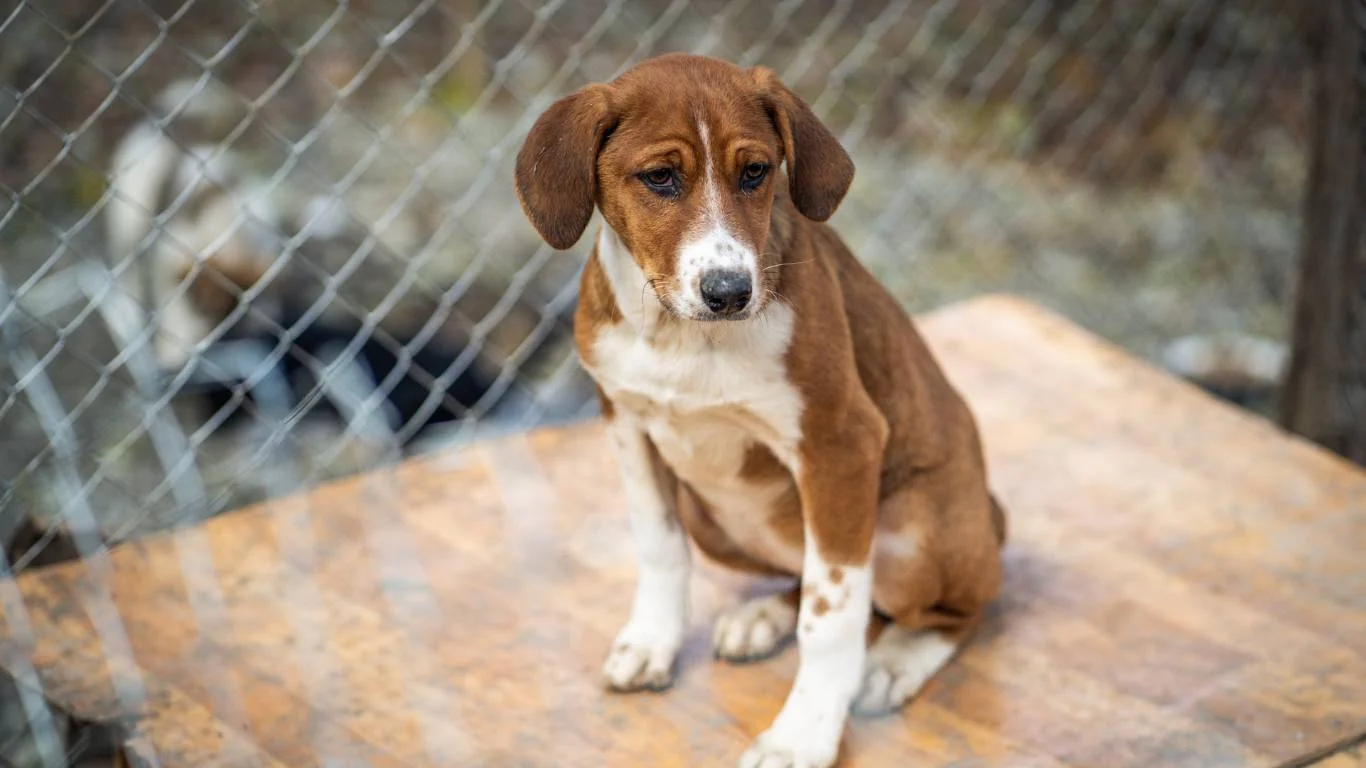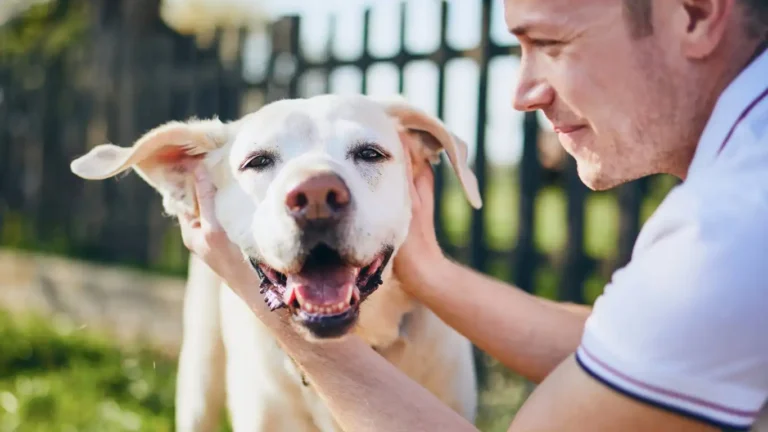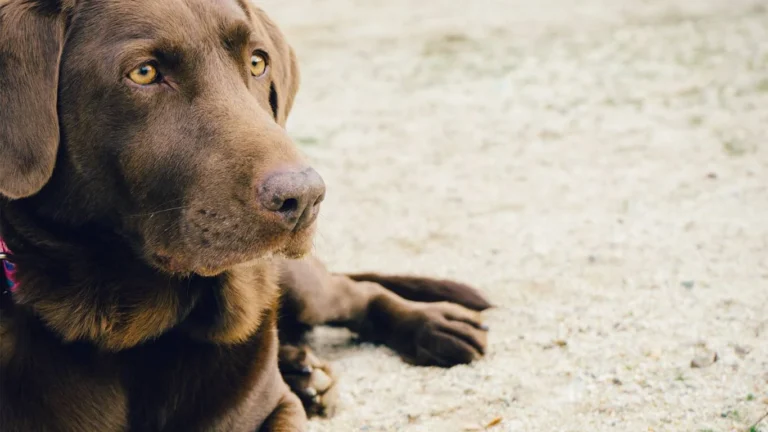Essential Guide: How to Help a Dog Recover from a Leg Injury Fast & Safely
If you’re a dog parent, you know that a leg injury can be a stressful time for both you and your furry friend. Whether it’s a minor sprain or something more serious like a fracture, learning how to help a dog recover from a leg injury is key to getting them back on their paws in no time. With my experience as a Veterinary Assistant with a focus on nutrition, I’ve seen countless cases where the right approach can make all the difference in the healing process. From providing comfort to administering the right care, there’s a lot to consider. This article will guide you through the essential steps to help your dog recover effectively and safely. So, let’s dive in!
What Happens When Your Dog Injures Their Leg?

First things first: understanding the nature of your dog’s injury is crucial. Dogs are incredibly resilient animals, but they rely on us to provide the proper care and support when they get hurt. Leg injuries can range from mild sprains to more severe conditions such as fractures or ligament tears. Each type of injury requires different forms of care, and recognizing the symptoms early on can make a huge difference in how well your dog heals.
When a dog injures their leg, the first sign you’ll likely notice is limping or favoring the injured limb. In some cases, the injury may cause swelling, bruising, or even an obvious deformity (if the bone is fractured). However, sometimes the injury might not be as visible, and your dog may still show signs of pain, like whining, lethargy, or refusing to put weight on the leg. This is why it’s essential to take a careful approach to care, even when you’re not entirely sure of the severity.
How to Identify the Type of Leg Injury
Is It a Sprain, Strain, or Fracture?
Determining whether your dog’s leg injury is a sprain, strain, or fracture is one of the first steps in ensuring they get the right treatment. Here’s a quick breakdown of each type:
- Sprain: This happens when the ligaments (the tissues that connect bones to each other) are stretched or torn. Common signs include limping, swelling, and pain when touched.
- Strain: A strain involves muscles or tendons, the tissues that connect muscles to bones. This injury typically occurs from overstretching or overexertion. Symptoms include muscle spasms, difficulty walking, and pain in the muscle area.
- Fracture: A bone fracture is more severe and often results from trauma, like being hit by a car or jumping down from a height. Look for signs like a visible bone protruding through the skin (in the case of an open fracture), swelling, and severe pain. Your dog may be unable to walk at all.
If you’re unsure of the severity of the injury, it’s always best to consult a veterinarian. They can perform diagnostic tests such as X-rays to determine the exact nature of the injury. Early diagnosis ensures your dog receives the right treatment promptly, which is critical for recovery.
First Aid for Your Dog’s Leg Injury

Before rushing to the vet, there are a few things you can do at home to help manage your dog’s injury and reduce the risk of further damage. Here’s what to keep in mind:
- Keep Them Calm: The first thing you want to do is limit your dog’s movement. Too much activity can aggravate the injury and prolong recovery. Confine your dog to a quiet, comfortable space where they can rest.
- Apply a Cold Compress: If there’s swelling, applying a cold compress can help reduce inflammation and numb the area. Use a towel or cloth to wrap some ice or frozen peas, and gently hold it against the injured leg for 10-15 minutes every few hours.
- Avoid Weight on the Injured Leg: Encourage your dog to avoid putting weight on the injured leg. If your dog insists on walking, you might need to support them with a dog sling or a makeshift harness to prevent further strain on the injury.
- Monitor for Signs of Pain: Pay close attention to your dog’s behavior. If they are in visible pain (whining, shaking, or becoming aggressive when you touch the injured area), it’s time to get them to the vet. Pain relief medications, prescribed by your vet, can be very helpful for managing discomfort.
Diet and Nutrition: Key Players in Recovery
As a Veterinary Assistant specializing in nutrition, I can’t stress enough how important diet is when it comes to healing. Proper nutrition can speed up recovery and support your dog’s immune system while they heal. Here’s what to focus on:
Protein is Essential
Protein is a building block for tissue repair and muscle recovery. When your dog is recovering from an injury, they’ll need more protein than usual to help rebuild damaged tissue. Look for high-quality protein sources in their diet like chicken, turkey, beef, or fish. If you’re feeding your dog kibble, check the label for an adequate amount of protein (around 20-30% for most adult dogs). If you’re feeding raw or homemade food, ensure that protein is the main ingredient.
Anti-inflammatory Foods
Incorporating anti-inflammatory foods into your dog’s diet can help reduce swelling and pain. Omega-3 fatty acids, found in fish oil, are great for inflammation. You can easily add a little fish oil to your dog’s food (check with your vet for the right dosage). Additionally, certain fruits and vegetables, like blueberries, carrots, and sweet potatoes, provide antioxidants and anti-inflammatory compounds that promote healing.
Supplements for Joint and Bone Health
If your dog has suffered a bone or joint injury, consider adding joint health supplements like glucosamine and chondroitin. These can help support cartilage repair and maintain joint function. Again, always consult your vet before introducing new supplements to ensure they are appropriate for your dog’s specific needs.
Remember, while good nutrition is essential, it’s just one piece of the puzzle. The care and attention you provide in the days and weeks following your dog’s injury are just as important for a speedy and full recovery.
How to Manage Your Dog’s Pain and Discomfort

Managing pain is one of the most crucial aspects of helping your dog recover from a leg injury. No one wants to see their furry friend in discomfort, and it’s important to address this from the start. Pain management can vary depending on the severity of the injury, but the goal is always the same: to help your dog feel comfortable while they heal.
Consult Your Vet for Pain Medication
One of the first things you should do if your dog is in pain is get professional help. A veterinarian can provide pain relief tailored to your dog’s needs. Non-steroidal anti-inflammatory drugs (NSAIDs) are often prescribed to reduce pain and inflammation. However, it’s crucial that you don’t give your dog human medications like ibuprofen or acetaminophen, as these can be toxic to dogs.
In some cases, your vet might also suggest opioids or other pain-relieving drugs for more severe injuries. These can help manage pain in the short term, especially if your dog has had surgery or a serious fracture. Always follow your vet’s instructions closely when administering any medication.
Natural Pain Relief Options
If you’re looking for more natural pain relief methods, there are a few options you can consider. For example, some dog owners find that CBD oil helps with both pain and anxiety during recovery. While the research is still ongoing, anecdotal evidence suggests that it may provide relief for dogs with mild to moderate pain. Again, make sure you consult with your vet before introducing any new treatment.
Additionally, certain herbal remedies such as turmeric or ginger might help with inflammation, but these should also be given under the guidance of a vet. You can also try gentle massage around the injury site (without pressing too hard) to encourage blood flow and provide some relief.
Supporting Your Dog’s Movement: Mobility Aids

During recovery, it’s essential to manage how much your dog moves, but that doesn’t mean they have to stay completely immobile. Supporting your dog’s movement is key to preventing further damage to the injured leg and ensuring that they heal as quickly as possible.
Using a Dog Sling
A dog sling is one of the best mobility aids you can use during recovery. A sling helps support the injured leg and reduces the strain on it, while allowing your dog to move around with more comfort. It’s especially useful if your dog has an injury affecting their rear legs. You simply place the sling under their abdomen and gently lift the weight off their injured leg as they walk. The sling gives them just enough support to keep them from putting pressure on the leg without limiting movement completely.
In my experience, many pet parents find that slings are a game-changer for dogs that are recovering from leg injuries. Not only do they help prevent further injury, but they also give your dog a sense of normalcy and the ability to get around without a struggle.
Orthopedic Dog Beds
Once your dog is resting and healing, having a comfortable, supportive place to lie down is incredibly important. An orthopedic dog bed will help relieve pressure on the injured leg and provide a more comfortable space for them to rest. These beds often come with memory foam, which can be particularly beneficial for joint and bone issues, helping your dog avoid additional discomfort.
Investing in a good bed can make a huge difference in how well your dog sleeps during recovery. Plus, they’re less likely to develop new pressure sores or stiff joints if they have a cozy, supportive spot to rest. Make sure the bed is large enough to give them plenty of space, but also firm enough to offer proper support to their body and injured leg.
When to Consider Physical Therapy

Physical therapy may not be something you think of right away, but it can be an incredibly valuable tool in your dog’s recovery process. It’s especially important for dogs who have undergone surgery, have serious fractures, or who have difficulty regaining full mobility after the injury.
The Role of Canine Physical Therapy
Canine physical therapy is designed to restore function, strength, and range of motion to the affected leg. It typically includes exercises that help rebuild muscle mass, improve circulation, and reduce stiffness in the injured limb. Your vet might refer you to a certified canine physical therapist who specializes in rehabilitation exercises.
Common physical therapy techniques include:
- Massage Therapy: A certified therapist can gently massage your dog’s muscles to alleviate tightness and improve blood flow to the injured area.
- Range of Motion Exercises: These exercises focus on gently stretching the muscles and joints around the injury to prevent stiffness and improve mobility.
- Underwater Treadmill: Some rehab centers use an underwater treadmill to help dogs move while minimizing stress on their joints. The buoyancy of the water helps reduce the weight placed on the injured leg, allowing for a low-impact workout.
- Cold Laser Therapy: This involves using light to stimulate healing in the injured tissues. It’s a non-invasive treatment that can help reduce inflammation and promote faster healing.
If you’re considering physical therapy, be sure to consult your vet first to determine whether it’s the right option for your dog. Therapy is typically more beneficial after the initial healing phase, but it can significantly reduce recovery time and help your dog regain full use of their leg.
Preventing Further Injuries: Keeping Your Dog Safe
Once your dog starts feeling better and the initial healing process is underway, you might be tempted to let them resume their normal activities. However, it’s vital to proceed with caution. Prematurely increasing their activity level can lead to setbacks and even cause a re-injury. Here’s how you can keep your dog safe during recovery:
Limit Their Movement
For the first few weeks, it’s important to keep your dog’s movement limited. While they may seem eager to run around again, it’s best to keep them on leash during potty breaks and short walks. Overdoing it can cause swelling, pain, and delays in the healing process. Slowly increase their activity level as your vet advises, ensuring that you don’t push them too hard too quickly.
Monitor Their Weight
Maintaining a healthy weight is essential for dogs with leg injuries. Extra weight puts additional strain on the joints and can hinder the healing process. Make sure you’re feeding your dog the right amount of food based on their activity level, and avoid overfeeding them during this period. If you’re unsure about portion sizes, your vet can help you adjust their diet accordingly.
Taking these precautions can go a long way in preventing further injuries and ensuring a full recovery for your dog.
When to Seek Veterinary Help for Your Dog’s Injury

While the steps I’ve outlined so far can certainly help manage your dog’s leg injury at home, there are times when professional veterinary intervention is absolutely necessary. In my experience as a veterinary assistant, I’ve seen plenty of pet parents wait too long to get help, only for their dog’s condition to worsen. It’s crucial to know when to seek veterinary help to ensure your dog’s injury doesn’t lead to permanent damage or complications.
Signs Your Dog Needs Immediate Veterinary Care
Knowing when to take your dog to the vet is one of the most important decisions in the recovery process. Here are some red flags to watch for that suggest your dog’s injury may need more advanced medical attention:
- Visible Deformities: If you see a bone sticking out of the skin (open fracture) or notice that the leg looks crooked, don’t wait—get to the vet immediately. This can be a sign of a severe break that requires immediate medical intervention.
- Severe Pain or Swelling: If your dog is unable to bear any weight on the injured leg or if there is intense swelling, it’s a good idea to visit the vet. Swelling that doesn’t subside after 24-48 hours could indicate more serious damage.
- Persistent Lameness: If your dog is still limping or refusing to walk properly after a few days of rest, it could be a sign of a more complicated injury, such as a ligament tear, that requires veterinary diagnosis and treatment.
- Signs of Infection: If the wound is open or has been surgically treated, look for signs of infection like pus, excessive redness, or an unpleasant odor. These are signs that your dog may need antibiotics or other medical treatments.
- Difficulty Breathing or Other Complications: If the injury seems to be affecting your dog’s overall health (for example, if they are also showing signs of difficulty breathing or excessive lethargy), seek veterinary care as soon as possible.
Even if the injury seems minor at first, it’s always best to err on the side of caution. If you’re ever in doubt, don’t hesitate to reach out to your veterinarian for advice. They’ll be able to guide you on whether your dog needs a more thorough evaluation or if home care is sufficient.
Post-Injury Care: Helping Your Dog Adjust
Once your dog has been seen by the vet and has started their healing journey, there are a few post-injury care strategies that can make their recovery a smoother experience. During the rehabilitation phase, your dog will likely still need your help to adjust to their new routine.
Maintaining a Calm and Quiet Environment
During the healing process, dogs need peace and quiet to rest and recover. It’s natural to want to shower your dog with love and attention, but too much stimulation can hinder the healing process. If you have other pets or children in the house, you may need to create a designated “rest area” for your dog. This will allow them to recover without the temptation of playing or roughhousing.
I always recommend setting up a comfy space where your dog can feel safe and undisturbed. You can use baby gates or pens to keep them confined to a small area, preventing unnecessary movement. Make sure their resting area is cozy, quiet, and has everything they need (water, food, and their favorite toys) to minimize stress.
Encourage Mental Stimulation
While your dog may not be able to engage in their usual physical activities, it’s important to keep their mind active. Boredom can lead to anxiety and frustration, which can hinder the healing process. Gentle, low-impact activities like puzzle toys, treat-dispensing toys, or scent work can keep your dog entertained while they rest. You can also work on training exercises that don’t require physical exertion, such as practicing tricks or basic obedience commands.
In my experience, this can help dogs feel mentally engaged, reducing feelings of isolation or frustration that may arise from being less mobile. Plus, it gives you some quality bonding time with your dog during their recovery.
Reintroducing Exercise: Step-by-Step
When your dog starts to heal and regain strength, it’s tempting to let them run free again, but it’s important to take things slowly. Rushing back into regular activity can cause setbacks in recovery. Here’s how to safely reintroduce exercise to your dog’s routine:
Start with Short, Leashed Walks
Once your dog is feeling more comfortable and the vet gives the green light, you can begin by taking short, slow walks on a leash. Start with a few minutes of walking per day and gradually increase the duration as your dog builds strength and stamina. Keep a close eye on their behavior—if they start limping or showing signs of discomfort, it’s time to scale back the activity level.
Increase Activity Gradually
As your dog’s leg continues to heal, you can start to gradually increase the intensity of their exercise. You may begin to add more varied activities, like gentle playtime or a longer walk, but always listen to your dog. If they show any signs of pain or reluctance to move, it’s best to pull back and allow more time for recovery.
Remember that recovery is a marathon, not a sprint. The more patient you are with the process, the faster your dog will return to their full range of motion and physical activity levels.
References
For more information about canine leg injuries and recovery, you can check out the following resources:
Disclaimer
While this article provides general advice on how to help a dog recover from a leg injury, it’s important to remember that every dog is unique. Consult your veterinarian for specific recommendations tailored to your dog’s injury and recovery process. This information is not intended to replace professional veterinary care but rather to provide helpful guidance during the healing process. Always seek the advice of your veterinarian if you have concerns about your dog’s health.






